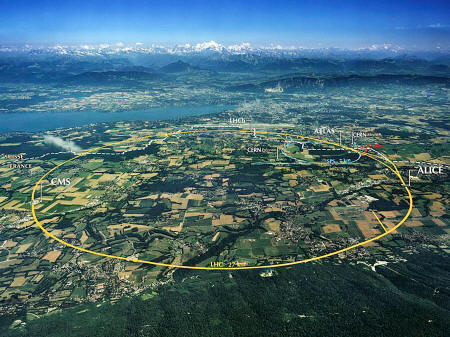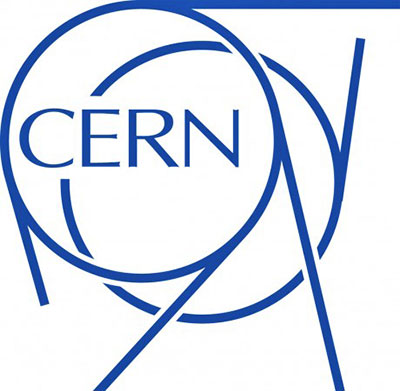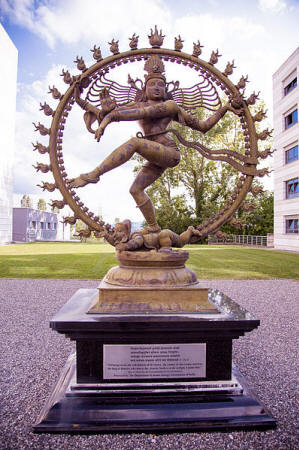|

by Michael Snyder
August 10, 2015
from
EndOfTheAmericanDream Website
Spanish version

Some of the things that I am going to
share with you in this article are deeply disturbing.
The European
Organization for Nuclear Research (also known as
CERN) is purposely
smashing particles into one another at astonishingly high speeds. If you think that sounds incredibly
dangerous, you are not alone.
Scientists all over the world have
suggested that the bizarre experiments taking place at CERN could
either open
a black hole, destroy the entire world or
open up a
portal to another dimension.
But none of those concerns have been
taken seriously.
Instead, scientists at CERN just continue to smash
more and more particles into each other at higher and higher speeds.
Just recently, I was at a meeting during which Brad Scott suggested
that the horrific earthquake in Nepal on April 25th coincided with
some very unusual activity at
the Large Hadron Collider.
I had never heard this before, and since
I am skeptical by nature, I decided to not just take his word for it
and look into it myself. And the truth is that it is hard to come to
any solid conclusions about this.
You can watch
this below video
and decide for yourself:
But without a doubt, I believe that
there are reasons to be deeply, deeply concerned about what CERN is
doing.
If you are not familiar with the Large Hadron Collider, the
following is some pretty good basic information from
Wikipedia…
The Large Hadron Collider (LHC)
is the world's largest and most powerful
particle collider,
the largest, most complex experimental facility ever built,
and the largest single machine in the world.
It was built by the
European Organization for Nuclear Research (CERN) between
1998 and 2008 in collaboration with over 10,000 scientists and
engineers from over 100 countries, as well as hundreds of
universities and laboratories.
It lies in a tunnel 27 kilometres (17 mi) in circumference, as
deep as 175 meters (574 ft) beneath the
Franco-Swiss border near
Geneva,
Switzerland.
Its first research run took place from 30 March
2010 to 13 February 2013 at an initial energy of 3.5 teraelectronvolts
(TeV) per beam (7 TeV total), almost 4 times more than the
previous world record for a collider,
rising to 4 TeV per beam (8 TeV total) from 2012.
On 13 February 2013 the LHC's first run officially ended, and it
was shut down for planned upgrades. 'Test' collisions restarted
in the upgraded collider on 5 April 2015,
reaching 6.5 TeV per beam on 20 May 2015 (13 TeV total, the
current world record for particle collisions).
Its second
research run commenced on schedule, on 3 June 2015.
As this second run progresses, the
number of particles that are being smashed together will continue to
increase. So, is it really a good idea to be
increasing the frequency of collisions so much?
The following is an
excerpt from
a recent press release that contained some of the specific
technical details…
As for any machine exploring a new
energy frontier, operators at the LHC face many challenges on a
daily basis.
Since the start of Run 2, they have been gradually
increasing the intensity of the LHC's two beams, which travel in
opposite directions around the 27-kilometre ring at almost the
speed of light.
The LHC has run at the record high energy with
each beam containing up to 476 bunches of 100 billion protons,
delivering collisions every 50 nanoseconds. In the coming days,
the intensity should increase further with a new rhythm of 25
nanoseconds.
After a planned technical stop in early
September, the teams will also be able to increase the number of
bunches with the goal of reaching more than 2000 bunches per
beam by the end of 2015.
"During the
hardware-commissioning phase, we have learnt to manage carefully
the huge energy stored in the magnets. Now with beam
commissioning we have to learn progressively how to store and
handle the beam energy," said CERN Director of Accelerators and
Technology Frédérick Bordry.
"Our
goal for 2015 is to reach the nominal performance of the LHC at
13 TeV so as to exploit its potential from 2016 to 2018."
At full capacity, the Large Hadron
Collider can smash protons together at a rate of a billion per
second. That is a number that is almost
unimaginable.
So precisely what are they hoping to
accomplish by this?
Most of the articles about the LHC in
the mainstream media discuss mundane scientific research goals that
don't really seem to justify all of the time, effort and money that
are being expended.
Could it be possible that the top
officials at CERN actually have something else in mind? The director of research at CERN,
physicist Sergio Bertolucci, has stated that the LHC may create a
"door" to "an extra dimension".
According to him, something might
come out of that door, or "we
might send something through it"…
A top boffin at the Large Hadron
Collider (LHC) says that the titanic machine may possibly create
or discover previously unimagined scientific phenomena, or
"unknown unknowns" - for instance "an extra dimension".
"Out of this door might come
something, or we might send something through it," said
Sergio Bertolucci, who is Director for Research and Scientific
Computing at CERN, briefing reporters including the Reg
at CERN HQ earlier this week.
But why create a portal to another
dimension if he doesn't have any idea what we might encounter? Or
does he?
Other prominent scientific voices have
expressed deep concern about what might happen at CERN.
For instance, Stephen Hawking has
suggested that the LHC may be capable of creating a black hole that
could 'swallow our world' and destroy the 'entire universe'…
Stephen Hawking says the 'God
Particle' that scientists believe created the world could
actually end it, too.
The particle - know as Higgs boson -
"has the worrisome feature"
that it could become unstable at extremely high energies and
create a "black hole" that would collapse the universe,
the legendary British physicist has warned in the Preface of a new book titled
'Starmus,'
according to
the Daily Express.
"This could happen at any time and
we wouldn't see it coming," Hawking claimed in the preface
of the book.
Others have raised questions that are
more philosophical in nature.
Why, for example, does the logo for CERN
contain "666"…

And why is there a statue of the
Hindu
god Shiva ("the destroyer") standing right outside CERN
headquarters?…

In the YouTube video
posted below, Jim Staley points these things out, along with
the fact that the LHC is built on the site of an ancient town that
was dedicated to "Apollyon" in Roman times.
I very much encourage you to watch this
13 minute video…
Let us hope that we don't get a
definitive answer to that question any time soon.
We might not like
the answer. And of course the scientific world
doesn't plan to stop here.
At this point there are plans to have an
even larger particle collider operational by
2026…
Physicists hope to eventually build
larger accelerators that would produce collisions with even more
energy than the LHC, which might allow them to discover new
particles and better understand dark matter.
The proposed International
Linear Collider, for instance, would be more than 20 miles
long, with a pair of accelerators facing each other straight on,
rather than the familiar ring design of the LHC and other
accelerators.
It's still pending, but could be
built in Japan, with scientists hoping to have it operational
by 2026.
|




